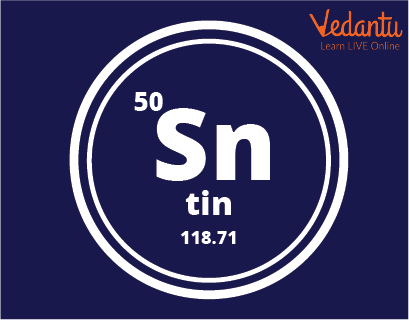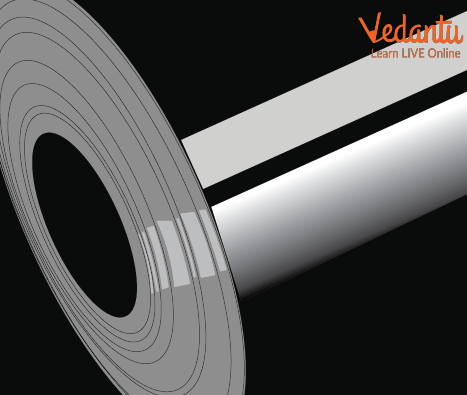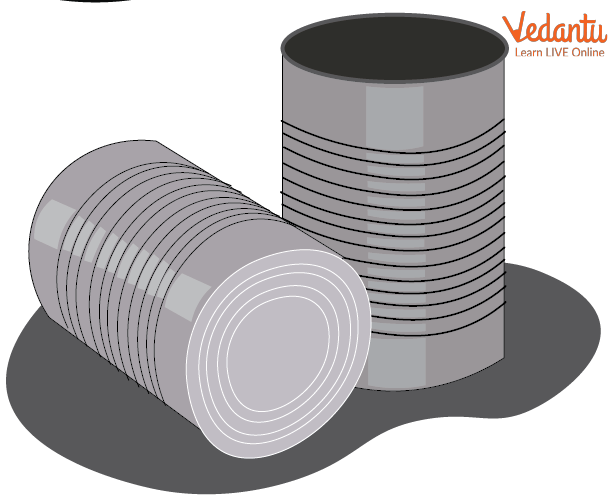




Introduction to Tin
Tin is the fourth element of the fourteenth part of the periodic table. It is classified as a post-progress metal. Tin atoms have 50 electrons and 50 protons with 4 valence electrons in the outer shell.
Tin (Sn), a chemical element having a place with the carbon family, is Group 14 (IVa) of the periodic table. It is a delicate, silvery white metal with a somewhat blue tinge, known to the ancients in bronze, a combination with copper. Tin is generally used for plating steel jars used as food containers, in metals used for bearings, and in solder. The symbol of tin is Sn, an abbreviation of the Latin word for tin, stannum.

Atomic Number and Atomic Weight of Tin
What is Tin Metal?
Tin or also called Stannum in Latin with the atomic number 50 has a place with group 14 of the periodic table. Tin shows a chemical similarity to both of its neighbours in group 14, germanium and lead, and has two fundamental oxidation states, +2 and the somewhat more stable +4.
Properties of Tin
Under standard conditions, tin is a delicate silvery-grey metal. It is highly moldable (meaning it tends to be changed into a thinner sheet) and can be polished to a shine.
Tin can shape two unique allotropes under normal pressure. These are white tin and grey tin. White tin is the metallic type of tin we are generally familiar with. Grey tin is non-metallic and also a grey powdery material. There are a few purposes for grey tin.
Tin is resistant to erosion from water. Tin material permits it to be used as a plating material to protect different metals.
It is richly found like other elements like cobalt, copper, nickel, cerium, and lead.
The tin forms its oxide at higher temperatures when it reacts with water and oxygen.
Symbol: Sn
Atomic Number: 50
Atomic Weight: 118.71
Classification: Post-transition Metal
Phase at Room Temperature: Solid
Density (white): 7.365 grams per cm cubed
Melting Point: 231°C, 449°F
Boiling Point: 2602°C, 4716°F
Discovered by: Known about since ancient times
Uses of Tin
It is used in tin plating, covering, and polishing as it has a high resistance to corrosion.
It is used in the soldering of steel as it has high magnetic strengths and lower melting points.
It is used in the production of other alloy metals like Bronze and copper.
It is used as a reducing as well as a colouring agent for glass, pottery, and sensors.
In the delivery business, it is used as an antifouling agent for boats and ships to prevent them from leeches.
In dental applications, it is utilised in certain items as stannous chloride (SnCl2).
It additionally has its applications in the electrodes of batteries like in the Li-ion batteries.
It is broadly used in the production of food containers made of steel.
The parts of the tin today are to make solder. Solder is a mixture of tin and lead that is utilised to join pipes and make electronic circuits.
Tin is also used as a plating to protect other metals like lead, zinc, and steel from corrosion. Tin jars are actually steel jars covered with a plating of tin.
Different applications for tin include metal alloys, for example, bronze and pewter, the creation of glass using the Pilkington cycle, and toothpaste.

Thin Sheets Made Up of Tin

Container Made up of Tin
How did Tin (Sn element) Get its Name?
The symbol of tin i.e. Sn is an abbreviation of the Latin word for tin, "stannum"
Some Interesting Facts about Tin
When a lot of tin is crushed, it makes a shouting sound called a "tin cry". This is because of the breaking of the crystal structure of the atoms.
Pewter is a tin alloy that is something like 85% tin. Other elements in pewter include copper, antimony, and bismuth.
White tin will change into the grey tin when the temperature decreases below 13.2 degrees C. This is prevented by adding little impurities to white tin.
Bronze normally comprises 88% copper and 12% tin.
Summary
From the above discussion, we can summarise the following points.
Tin is a metallic chemical element, chemical symbol Sn, atomic number 50.
It is a delicate, silvery white metal with a somewhat bluish tinge, utilised since antiquity in the conventional type of bronze, its alloy with copper.
Since it is nontoxic, ductile, malleable, and effectively worked, it is utilised to plate steel cans ("tin cans") for use as food containers and to cover and plate different things.
Pure tin is too weak ever to be utilised alone, however, its many alloys include soft solder, pewter, bronze, and low-temperature casting alloys.
FAQs on Facts About Tin
1. How is the Sn element obtained?
Sn element is obtained fundamentally from mineral cassiterite (SnO2) and is separated in a carbon heater by road sn element cassiterite. sn element is just around 0.001 percent of the Earth's crust and is primarily mined in Malaysia. The grey sn element slowly transforms at temperatures above 13.2° C into the second type of sn element, the white sn element. It is mostly found in the 'tin belt' extending through China, Thailand, and Indonesia. It is additionally mined in Peru, Bolivia, and Brazil.
2. Why is the Sn element so important?
Sn element prevents corrosion and is used on other metals as a protective covering element. The most well-known example of this component is probably the sn element jars. To be sure an sn element can be made of steel. To prevent the steel from rust element, a slight layer of sn element is added to both the inside and outside of the can. Alloys of tin are important, for example, soft solder, bronze, and phosphor bronze. Niobium-tin alloy metal is used for superconducting magnets.









